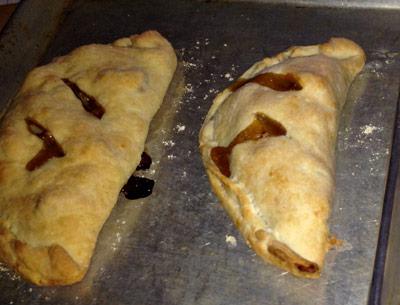Seasons by the Sea: Fake It Till You Bake It

Without a doubt, trying to make a truly delicious vegan dessert is a challenge. Trying to make a flaky, delicious vegan pie crust even more so.
Some recipes for vegan desserts are better left ignored, or improved upon, or at least challenged. Ignored because some things just don’t taste very good with alterations. Improved upon because some recipes show promise but are sloppy. And some should be challenged because there really is no substitute for whipped cream or meringue or many other things, taste and texture-wise.
You can make a vegan version of whipped cream but it is time-consuming (it takes three stages of whipping, temperature monitoring in and out of freezer, and will cost ya!) and is just as sugary and fatty as a dairy version.
My theory about fake bacon, mock meat, faux cream, etcetera is just don’t bother. These things simply don’t taste good and they certainly don’t taste like what they are engineered to mimic.
My long and arduous experiment into vegan pie dough was educational. After a good deal of research I settled on two recipes, one from Food 52, an awesome and reliable website, and one from About.com. Another website, Post Punk Kitchen, was fun to read but sure had a lot of curse words and opinions about ex-boyfriends and stuff.
The Food 52 recipe called for coconut oil. The flaky vegan piecrust from About.com called for margarine. I also made some of my own favorite pie dough for comparison.
Having never worked with coconut oil or margarine, I made mistakes with both. I chilled the coconut oil, which made it flaky and chunky, too hard to measure until I let it come back to room temperature. With margarine, I made the really stupid mistake of buying tub margarine instead of stick. This has more water. The first batch of dough was very soft as a result. I went back to the drawing board and repeated the recipe with stick margarine.
As a professional pastry chef, I had great confidence in my ability to make the doughs properly, not overwork them, measure meticulously, and roll at the correct temperature without too much flour. I made all of them in a food processor, a quick and reliable method. The Food 52 dough came together nicely and rolled out well once chilled. It did, however, have a few solid chunks of coconut oil that reminded me of candle wax. The About.com recipe also came together nicely and rolled out into a disc cooperatively, but then completely fell apart when moved.
For taste tests, I made each dough into cookies and apple turnovers. Although it looked like a holy mess, the margarine dough tasted okay and had a short texture. The Food 52 recipe was sturdy, very sturdy. My own recipe, with butter and a bit of shortening, was divine and flaky.
After testing and tasting and tasting and testing, I began to wonder, how does one cleanse the palate between piecrusts? Fat is fat and flour is flour and regardless of what kind you use, your tongue is going to start feeling coated with spackle after a while.
I also began to question some of the vegan websites I came across in my research. There are few vegan dessert cookbooks in the mainstream so these resources are all I had to go on. One recipe for vegan chocolate cake suggested chocolate chips for the frosting. Not vegan chocolate chips, just chocolate chips, which contain milk.
The vegan website Ohsheglows does point out that the most popular desserts are anything no-bake, quick and easy, and chocolate, chocolate, chocolate. So perhaps this is the way to go. I am not going to include the recipes I tried; they are not worth it. If you think you have a good vegan piecrust recipe, don’t send it to me, make it for me. In the meantime, my vegan friends will have to be content with frozen banana “ice cream” with caramelized nut topping. That doesn’t sound so bad, does it?
Click for Recipes
